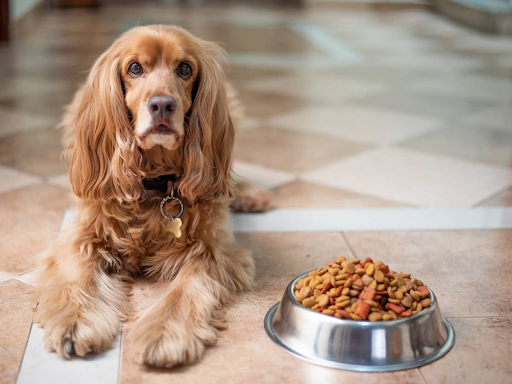A balanced pet diet is not only an important aspect of pet health, but also a way to express care and love for our four-legged friends. But what if your furry companion suffers from allergies and food intolerances? Let’s take a look at how to choose the right dog food for dogs with specific nutritional requirements.
How to recognize abnormalities
It is important to understand the difference between allergies and food intolerances. An allergy is the body’s immunologic response to a specific antigen (allergen), while an intolerance is related to the body’s inability to properly digest certain food components.
Common allergens are:
- beef;
- chicken;
- milk;
- eggs;
- wheat;
- soybeans.
However, the manifestations of these conditions may be different for each animal.
Symptoms of allergies and intolerances:
- Cutaneous manifestations. Rashes, itching, rashes, or inflammation on the skin. Dogs may itch, lick their paws or sides intensely.
- Gastrointestinal problems. Vomiting, diarrhea, abdominal bloating, and pain. The dog may experience restlessness after eating. These are all signs of intolerance.
- Respiratory symptoms. Sneezing, difficulty breathing, or runny nose indicate an allergic reaction.
Diagnostics and condition monitoring
A veterinarian should be consulted for diagnosis. Blood tests and tests can help determine the cause of the symptoms.
If the dog is diagnosed with an allergy or intolerance, the diet should be specifically designed to avoid the allergens involved.

Choose Hill’s branded dog food or products from other trusted manufacturers with limited ingredients (or hypoallergenic formulations) to minimize the risk of allergic reactions.
Specialty supplements can be used to maintain healthy skin and alleviate allergy symptoms. Superfoods rich in antioxidants and nutrients can help boost the immune system and alleviate symptoms.
Monitoring and correction
Once you have developed a specialized diet for your dog, it is important to constantly monitor his condition and reactions to the food. This will allow you to notice alarming symptoms in time and adjust the menu if necessary.
Observe the behavior and general condition of the pet:
- Observe the condition of the skin and coat. Any redness or rashes may indicate a negative reaction to the diet.
- Pay attention to changes in behavior. If your dog becomes restless, itchy, licks his paws, or exhibits aggressive behavior after eating certain foods, it could be a sign of a food intolerance problem.
- Monitor GI function. Abnormalities may be a sign of allergies or intolerances.
New foods should be introduced into the diet gradually to monitor the body’s reaction to a particular component.
If you notice any negative symptoms or changes in your pet’s condition, do not hesitate to consult your veterinarian. They may recommend dietary adjustments or additional tests.

